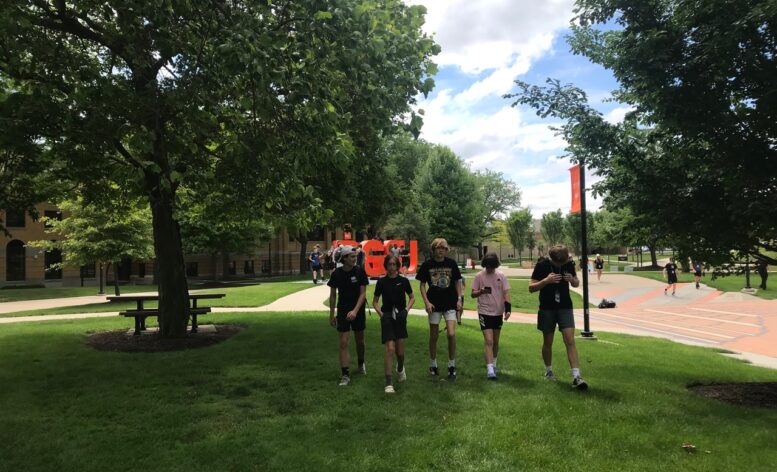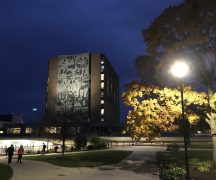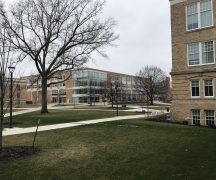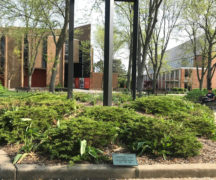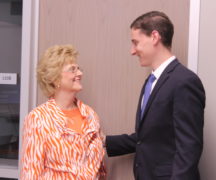By DAVID DUPONT
BG Independent News
While the legislature continues to negotiate the budget that will fund the state for the next two years, BGSU trustees Thursday (6-22-23) went ahead and acted on tuition rates and its own annual budget.
[RELATED: BGSU trustees approve naming math building named for McLeod]
The trustees approved a tuition increase that will have incoming students pay 1.15 percent annually more than students who entered last year. That would be a hike of $25.50 per credit hour and bring tuition to $6,865 a semester. This will amount to their paying 4.6 percent over the four years, the maximum allowed by current state law.
The Ohio Senate proposal however would restrict tuition to a .75 percent a year increase, or 3 percent of the next four years.
If the Senate prevails in budget negotiations, said Chief Financial Officer Sheri Stoll, students would be billed for the amount approved by trustees, and then refunds would be issued. Because the university has administrative deadlines, it had to pass a spending plan before the final biennial budget was in place.
Stoll noted that Gov Mike DeWine proposed an increase of 3 percent for the state share of instruction. That’s in line, Stoll said, with the increases for other state agencies. But the House reduced that to 1.4 percent in each of the two years, and the Senate further cut that to a 1 percent increase in each budget year.
Under the House plan, BGSU would receive $89.6 million in state support in the next fiscal year, which begins July 1, and $90.6 million next year.
State revenue makes up 20 percent of the $447.6 million in revenue in this year’s budget. The plan calls for spending $446,915,587. If the Senate plan prevails, BGSU would get $350,000 less, Stoll said.
The university’s biggest expense are salaries and benefits for employees. The approved budget calls for spending $240.5 million for those.
The pool of money to pay faculty will increase 2.5 percent because of the contract negotiated by the faculty union. That will be divided in a 1 percent across the board increase, and the remaining 1.5 percent based on merit. Other BGSU employees will receive similar raises.
Tuition and fees bring in $219.6 million in revenue. The just approved tuition increase will generate about $1.7 million in additional revenue.
State support is still $5 million less than it was in 2010, when the recession sparked a steady decline in state support for higher education, bottoming out at $66.9 million in 2015.
In that period the state also changed the way it calculated the amount universities would get, using how many students a university retained and graduated as a measure of how much money it would get.
“We began to focus on retention and student timely graduation in a way we hadn’t previously,” Stoll said.
The steady increase in state revenues points to the success of those efforts.
“Part of that increase has been our performance relative to others rather than an increase in the pool,” President Rodney Rogers noted.
BGSU has also pushed to develop in demand programs, such as aviation, engineering technology, nursing, an online Master of Business Administration, and the doctorate in Physical Therapy, which just completed its first year.
The tuition for that program is increasing 2 percent for the next entering class. Otherwise, graduate fees will be unchanged as will the surcharge for out-of-state students.
Stoll noted that if since 2010, the state had provided “a modest” 1-percent increase a year in higher end funding, BGSU would be getting $109 million this year. An annual 2 percent increase would have generated $116 million.
“It’s difficult not to think of what we could be doing if we had those additional resources,” Stoll said.
Rogers said the university would not have needed to increase tuition as much if it had those resources.
Enrollment growth remains critical to the university’s continued financial health, Stoll said. But that’s increasingly difficult as the number of high school seniors continues to decline.
BGSU is working to buck that trend.
Cecilia Castellano, vice president for enrollment management, said that the positive enrollment news she reported at May’s trustees meeting remains true. About 14,000 undergraduates are expected this fall, up about 150 students.
Based on the number of students participating in orientation – the 10th of 15 sessions was held this week – those numbers are holding. Also, the university expect to retain 81 percent of the first year students who entered in 2022, a record retention rate for BGSU.
Trustee Richard Ross questioned why there was no new money in the budget for developing more new programs.
Stoll said there was some new money for an Occupational Therapy Doctorate that’s in the works.
Rogers said that money for new programs often comes from internal shifting of resources. Some open faculty positions are reassigned to new programs.
Ross noted that some other universities are struggling. If some of those closed, he wondered, how would impact BGSU?
Rogers said he has not heard any proposals to close any campuses.

